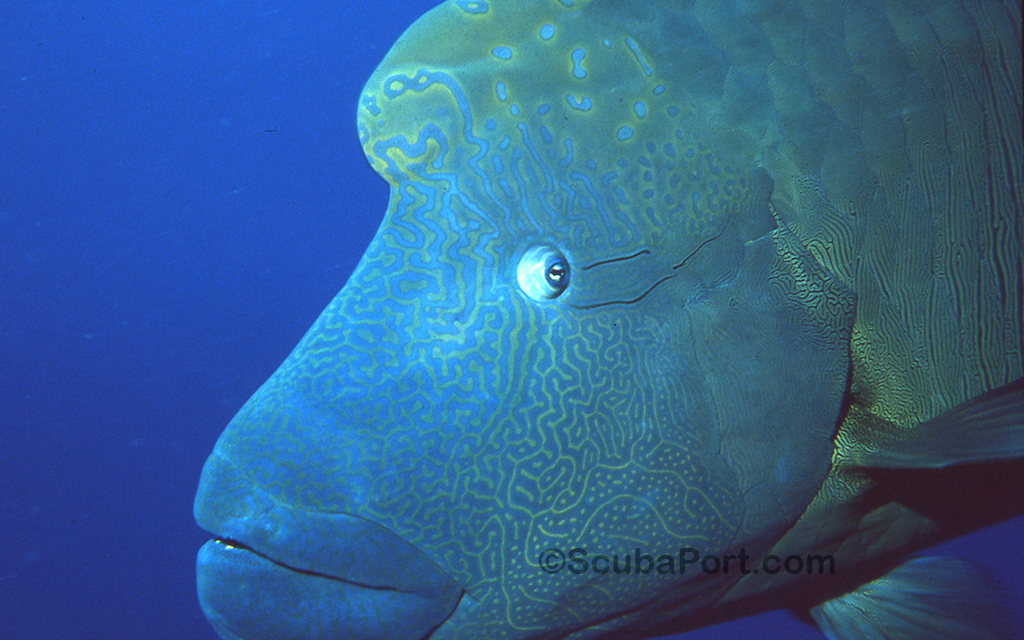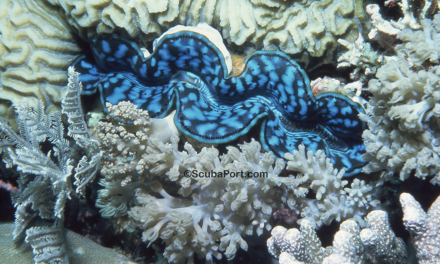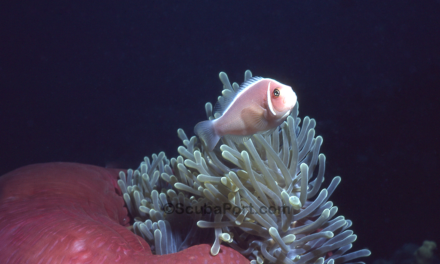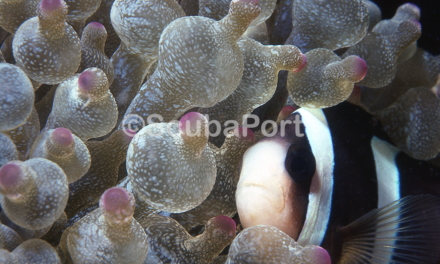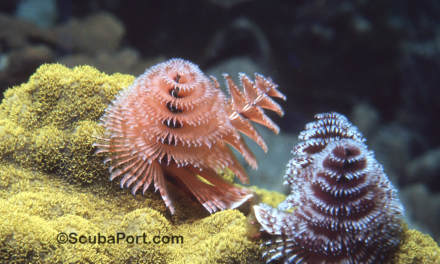The Napoleon Wrasse is a gentle giant. Found in many regions of the world, especially the east coast of Africa and in some areas of the Indian and Pacific Oceans, it is curious, friendly and easy to photograph. The species can easily be identified by its thick lips, two black lines behind its eyes, the hump on the foreheads of larger adults and by the markings on its face that inspired one of its aliases – the Maori Wrasse.
The largest of the wrasse family, the Napoleon Wrasse can live 30 years or more and may grow to six feet long, weighing up to 400 pounds. At around nine years old, many females change their sex to male exchanging their female red-orange coloring to the males’ coloration that ranges from dull blue-green to a more vibrant shade of green and bright blue.
Napoleon Wrasses prey on fish and invertebrates like mollusks and sea urchins that they often carry in their mouths, striking them against rocks with brisk, sideways head movements. They can rotate their eyes independently 360 degrees, enabling them to thoroughly observe their surroundings.
The Napoleon Wrasse is one of the few fish that can safely eat toxic animals like boxfish, sea hares and the crown of thorns starfish. It is a key element of the marine food chain that maintains a balanced and healthy coral reef.

